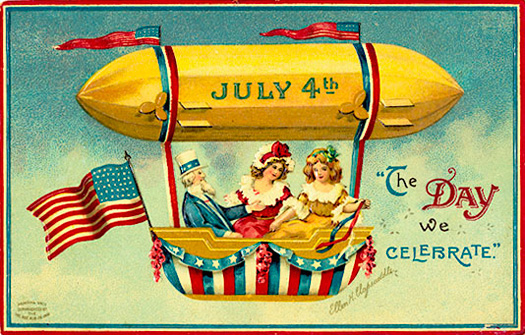
From the collection of Richard Sheaff
Fourth of July Postcards
American University Professor Emeritus James Heintze is without a doubt the world expert on all things Fourth-of-July-related. And so it is with great delight that we share with our readers his robust overview of what was once an American tradition: the sharing and selling of early 20th-century postcards celebrating the birth of the nation.
The images that follow are taken from the collections of two ephemera collectors — Scott Henderson and Richard Sheaff — who generously sent highlights from their own collections. This was originally posted July 4, 2010.
Fourth of July Postcards
American University Professor Emeritus James Heintze is without a doubt the world expert on all things Fourth-of-July-related. And so it is with great delight that we share with our readers his robust overview of what was once an American tradition: the sharing and selling of early 20th-century postcards celebrating the birth of the nation.
The images that follow are taken from the collections of two ephemera collectors — Scott Henderson and Richard Sheaff — who generously sent highlights from their own collections. This was originally posted July 4, 2010.
—The Editors
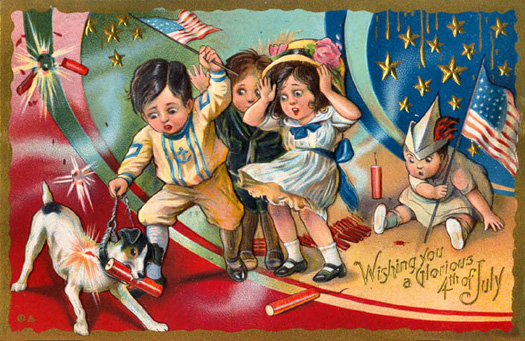
Early 20th-century postcards manufactured for the Fourth of July were very popular. Thousands of colorful cards featured such themes as Uncle Sam, the Goddess of Liberty, eagles, cannons, flags, liberty bell, fireworks, Statue of Liberty, Native Americans, Revolutionary War figures, nautical subjects, and the nation's founders. From the early 1900s the production of postcards neatly coincided with the Safe and Sane movement that was initiated in a number of major cities to get dangerous fireworks away from the public. Many cards demonstrated the seriousness of this issue, but interestingly did so in a humourous vein. One popular card included the conundrum: "How to prevent your boy being killed on the Fourth of July-kill him on the third."
According to Harvey Ginsberg, cards were typically sold in sets of six. Illustrators such as Ellen Clapsaddle and E. Nash were household names to those who collected these cards. Ellen H. Clapsaddle (1865-1934) was active in New York and later in Germany in the early 20th century creating illustrations for thousands of postcards. Her focus was mostly children. She worked for the International Art Company and produced an imaginative series of Fourth of July cards.
"Greeting" cards often included verse that was similar to Fourth of July poetry published in newspapers at that time. The quality was mediocre at best. Examples include: "Day of flags and cannon and jubilee! Guarded well, gloried in, so may it ever be" and "Oh spirit of honor of freedom of peace! Guard well with a vigil that never shall cease." The sense of guarding the nation's freedom and the idea of stewardship was a common notion that all shared and continue to share today.
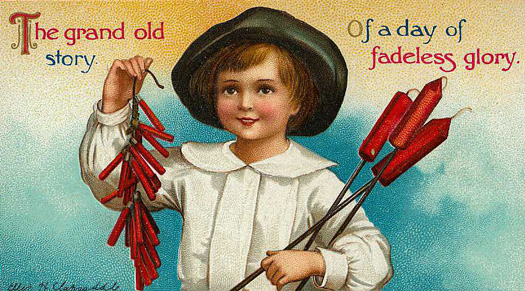
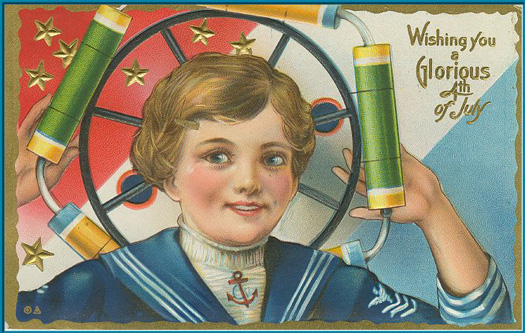
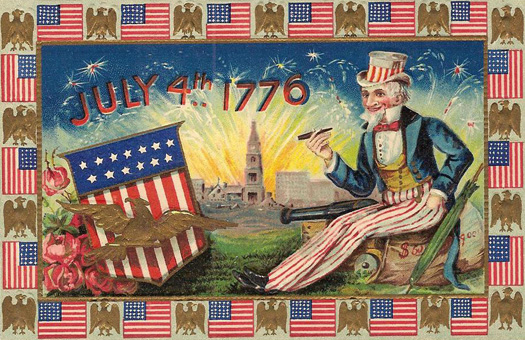
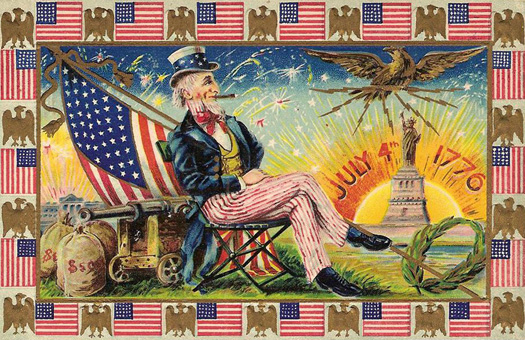
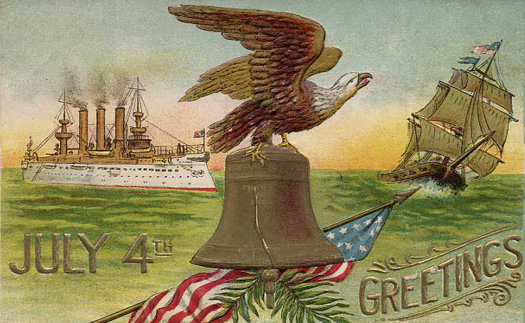
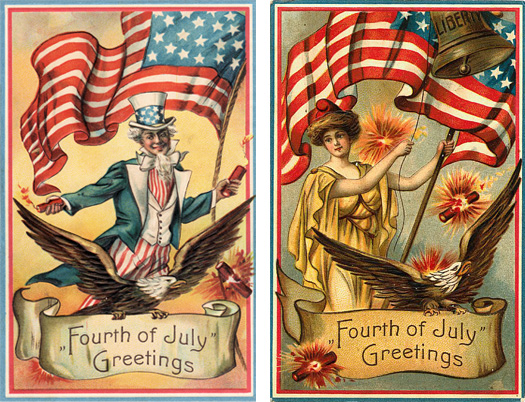


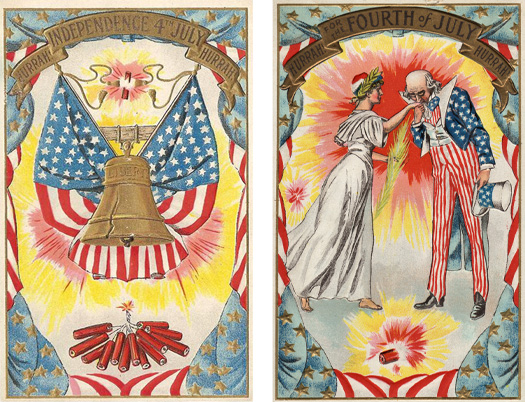


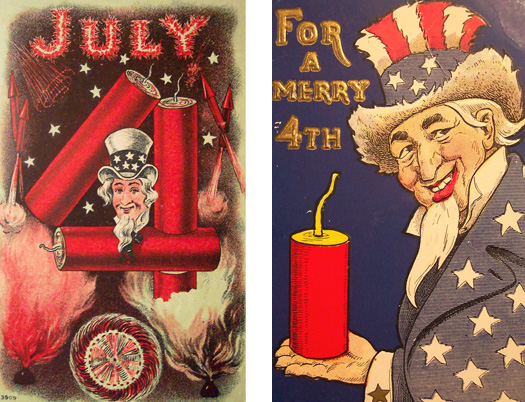
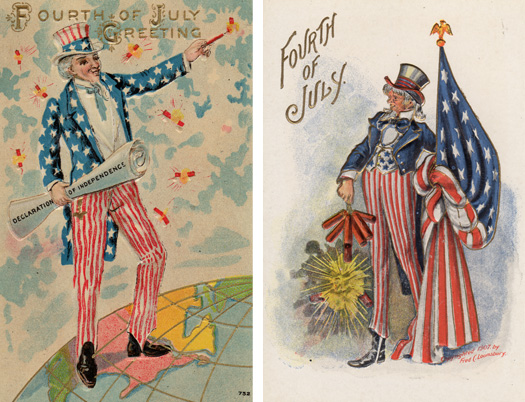
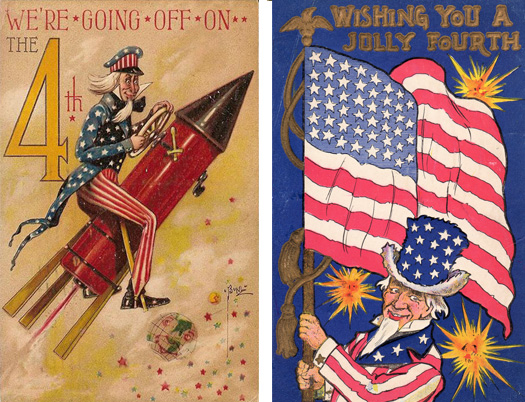
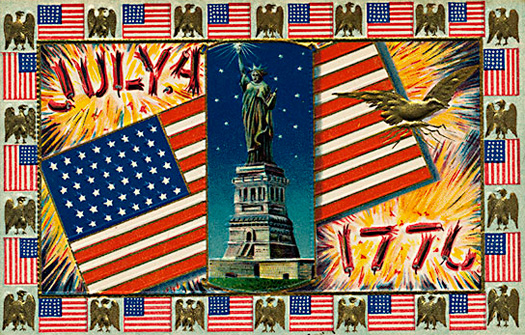
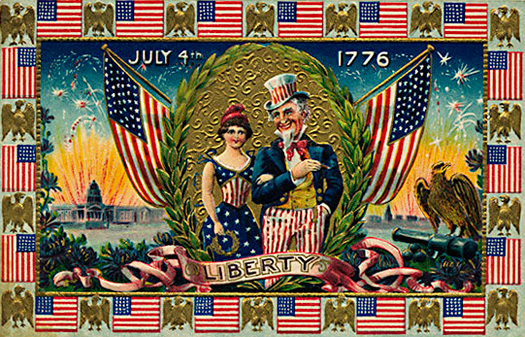
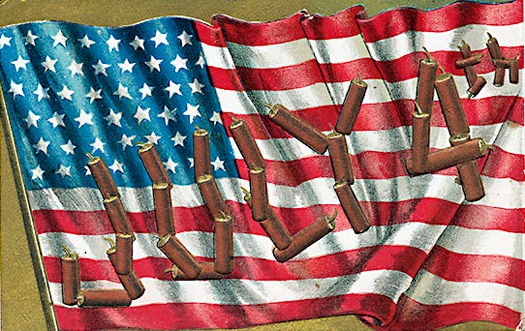
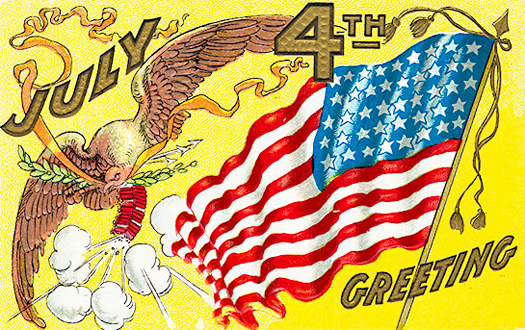
Sources: “A Bang-Up Fourth: A Portfolio,” American History Illustrated 15/4 (July 1980): 26-28; Harvey Ginsberg, “Siss! Boom! Bah!: Postcards from a Patriotic Past,” Smithsonian 25 (July 1994): 34-37.
